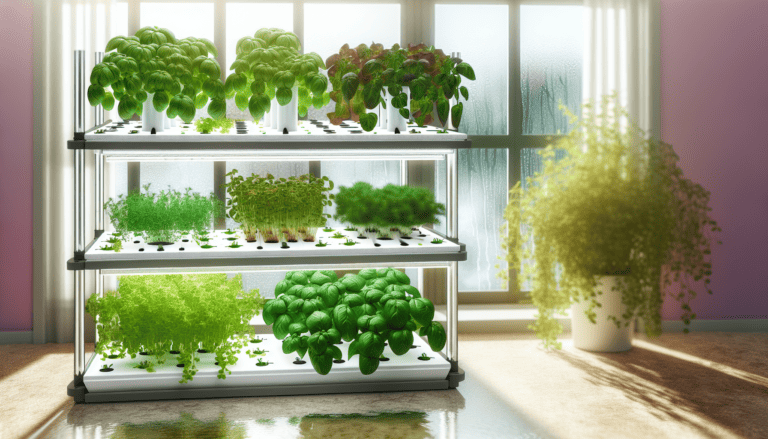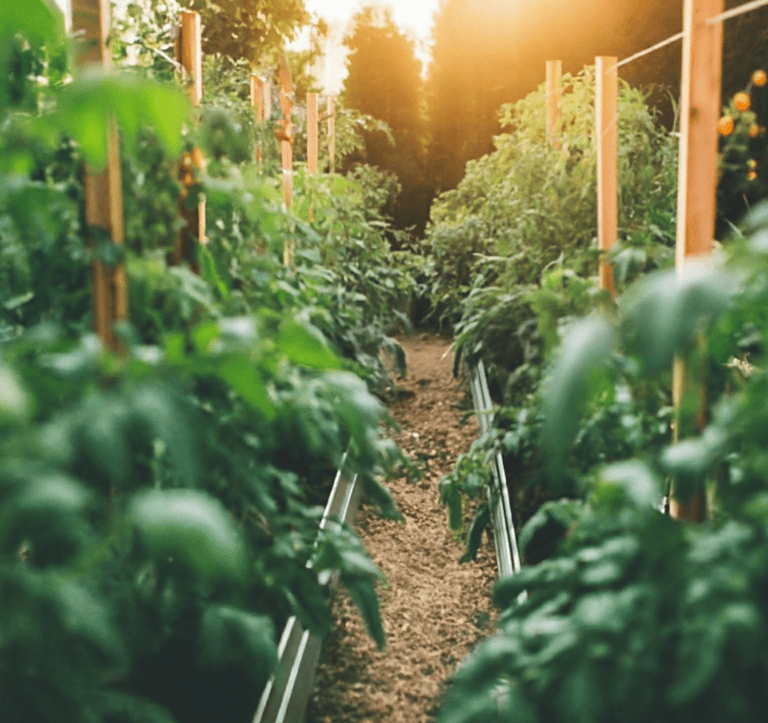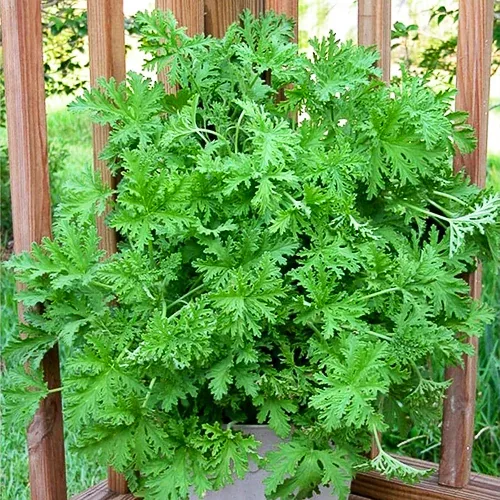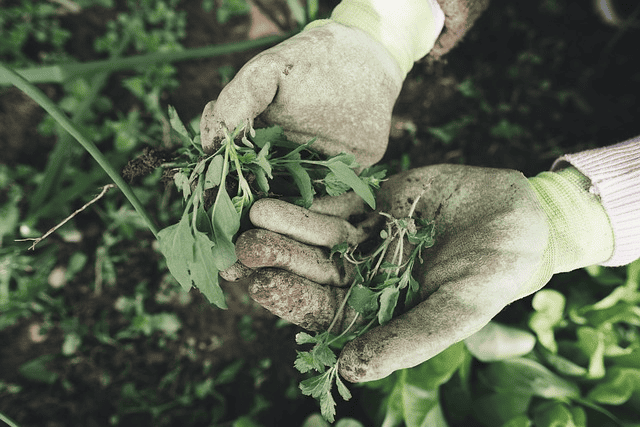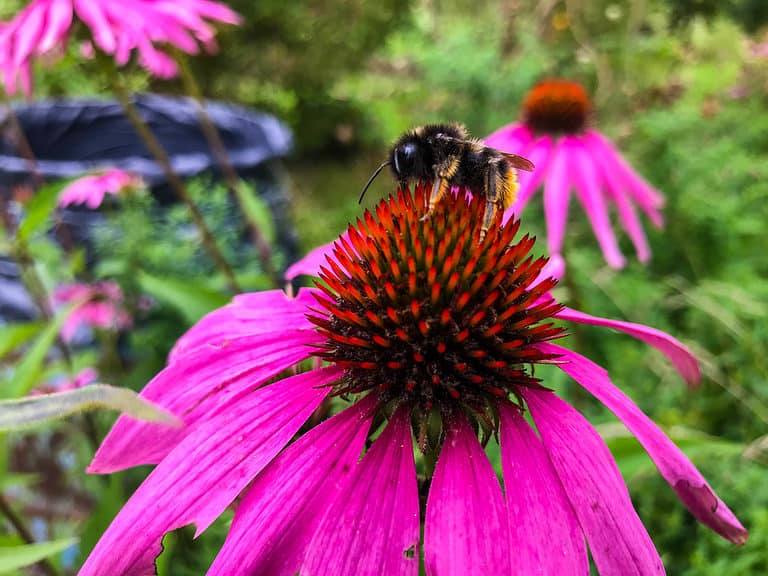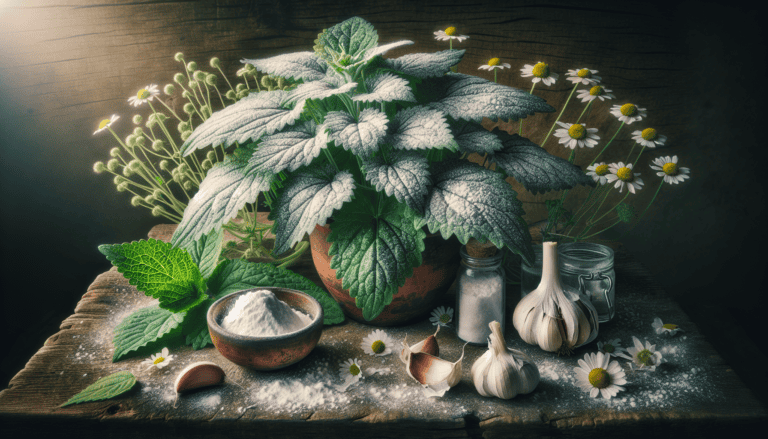Effortless Hydroponic Maintenance: Your Ultimate Guide to a Thriving System
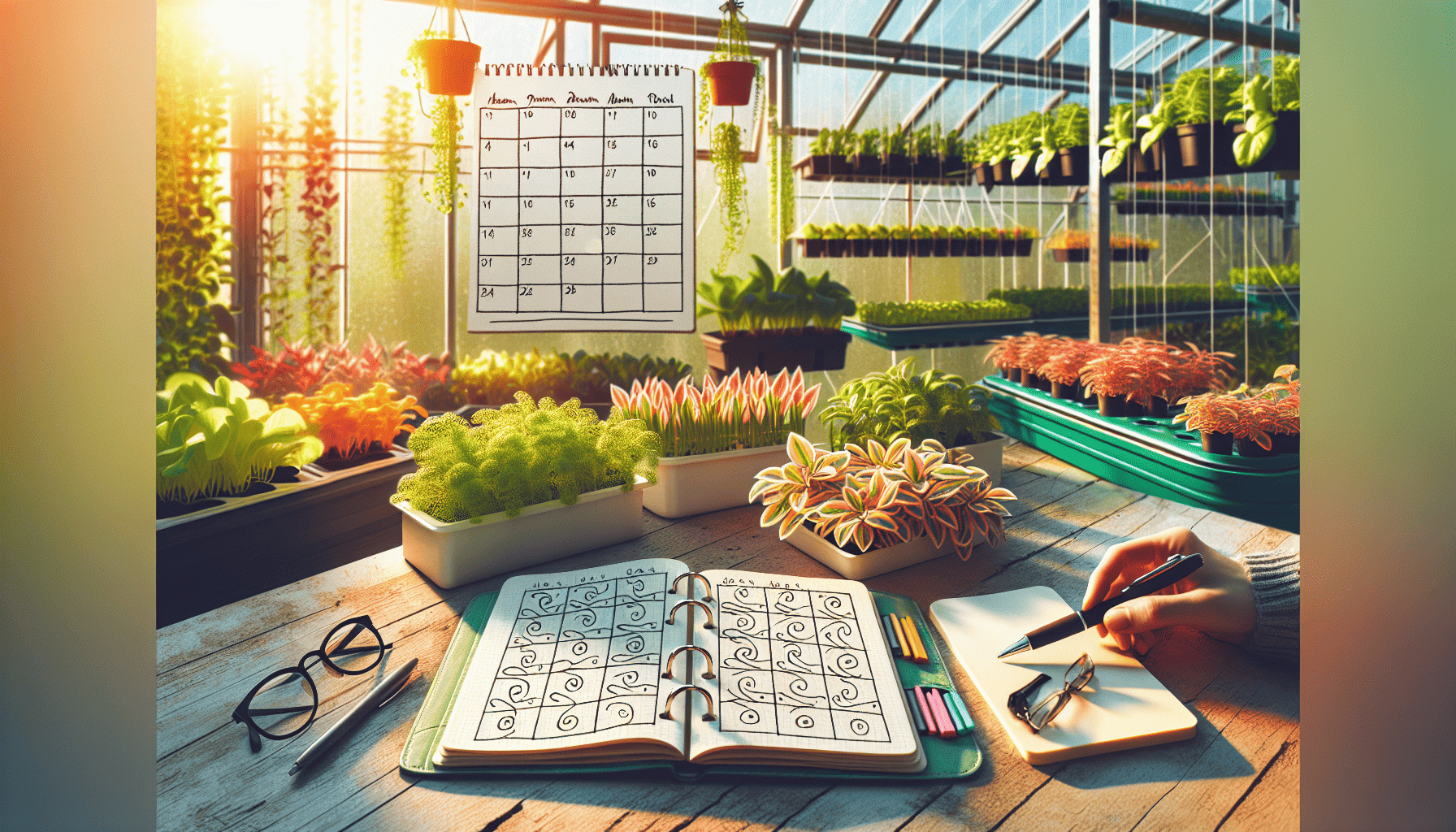
Struggling with hydroponic maintenance? Keeping your system in great shape means regular monitoring and cleaning to avoid common issues like pests and nutrient deficiencies. Our guide provides clear instructions on essential maintenance actions to ensure your plants remain healthy. Discover how simple it can be to maintain your hydroponic system and achieve optimal results.
If you are new to hydroponics or looking to learn more please check out our Ultimate Guide to Hydroponics.
Key Takeaways
Regular maintenance promotes plant health, increases yields, and prevents pests and diseases in hydroponic systems by ensuring clean conditions and optimal nutrient delivery.
Key tasks for hydroponic maintenance include draining and flushing the system, sterilizing equipment, and monitoring pH and EC levels to maintain an ideal growing environment.
Maintaining a routine maintenance schedule, using appropriate cleaning agents, and keeping a detailed maintenance log are essential practices for efficient hydroponic system management and troubleshooting.
The Importance of Hydroponic Maintenance
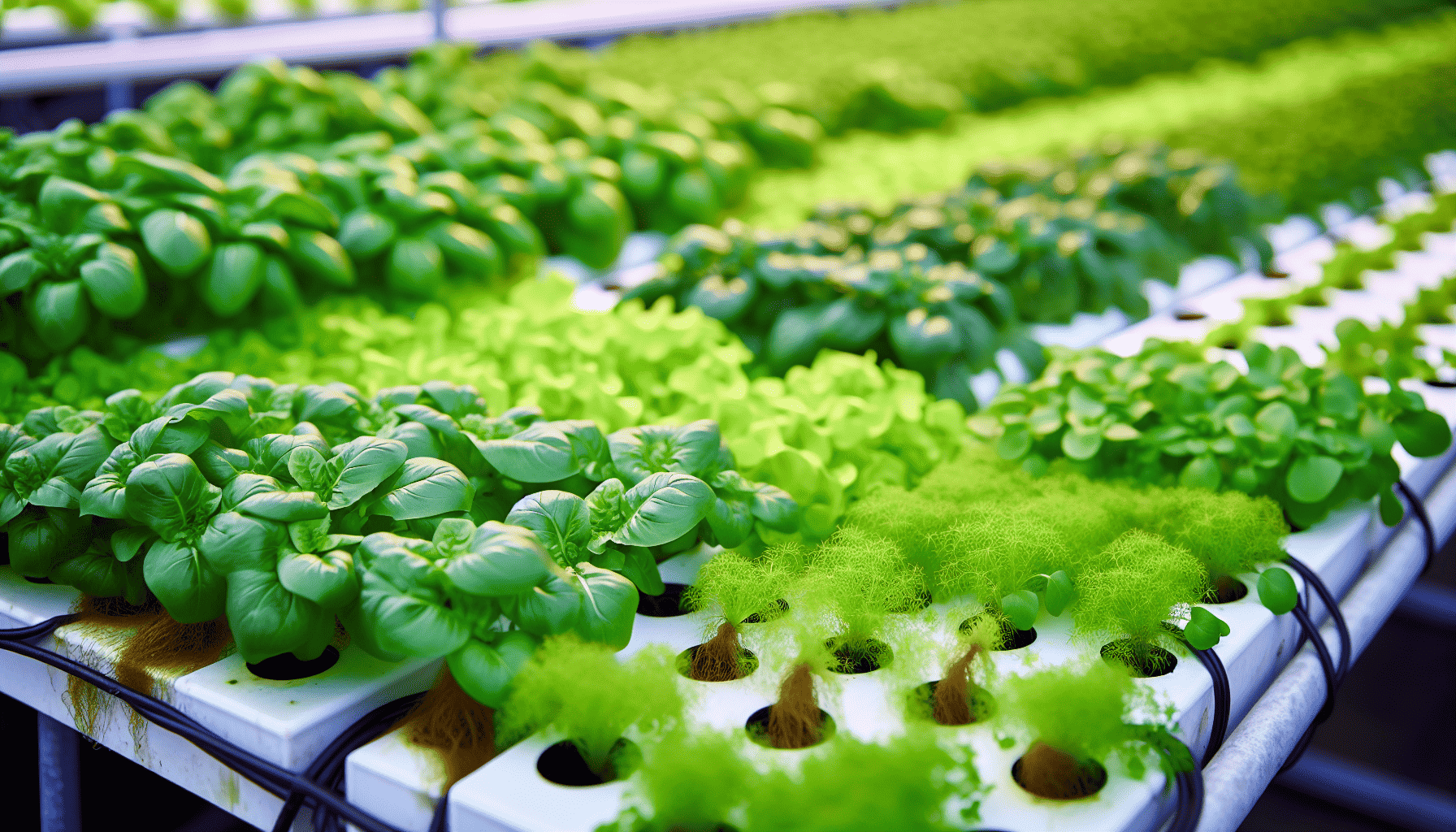
A well-maintained hydroponic system is comparable to a smoothly functioning machine, with all its components working in unison to support vigorous plant growth and maximize yields. Routine maintenance plays a crucial role in ensuring that plants are supplied with a constant supply of fresh nutrient solution, promoting their overall health. This also aids in quickly identifying and resolving any potential issues such as nutrient deficiency, unfavorable growing conditions or pest infestations.
While feeding and watering the plants is essential for their nourishment, it’s equally important to keep the entire hydroponic system spotless. A clean system guarantees optimal absorption of nutrients by plants without being hindered by algae or bacteria. Keeping special attention on cleaning the nutrient reservoir cannot be overlooked as an unclean one can decrease your whole setup’s efficiency while contaminating water which ultimately harms plant life.
Understanding how critical maintaining a hydronic system really is helps us explore three main benefits associated – bolstering plant vitality, improving yield output, safeguarding against pesky pests and diseases threatening our crops’ wellbeing.
Healthy Plant Growth
Maintaining a healthy hydroponic garden is crucial for optimal plant growth in any well-maintained grow room. Lush green leaves, regular growth patterns and absence of deformed foliage are clear signs of consistent maintenance. This involves supplying fresh water to the plants and ensuring that ideal growing conditions are maintained.
Regular upkeep is essential for the overall health of your plants. It helps prevent nutrient deficiencies, reduces the risk of pests and diseases, thus promoting strong plant life. In particular, pruning is necessary for certain types like cannabis as it minimizes organic matter shed by them which contributes to maintaining a clean system and supporting excellent plant growth.
Increased Yields
Hydroponic gardening aims to achieve high yields, which can be achieved through regular maintenance. Effective upkeep is crucial in ensuring the proper distribution of nutrients to plants and selecting suitable ones, maintaining optimal light levels, and balancing nutrient ratios can help maximize production.
Even though hydroponics systems are known for their ability to produce top-quality crops under challenging conditions, switching from soil does not automatically guarantee increased yields. It is essential always to keep a clean hydroponic system for optimal results that meet expectations.
Prevention of Pests and Diseases
Maintaining a thriving hydroponic garden is more than just achieving abundant plant growth. It also involves preventing the spread of pests and diseases. Regular sterilization of your hydroponic system plays a crucial role in avoiding issues such as algae development, harmful microbial growth, and creating an optimal environment for healthy plants.
The importance of keeping a clean and sanitized hydroponic system cannot be overstated when it comes to warding off pests, promoting proper air circulation, and reducing disease risks, especially during the introduction of new plants into the system. Neglecting to sanitize can lead to an increase in detrimental microbes, pesky insects or rodents invading your garden space, which may cause damage or impairments on plant health over time.
Essential Maintenance Tasks for Your Hydroponic System
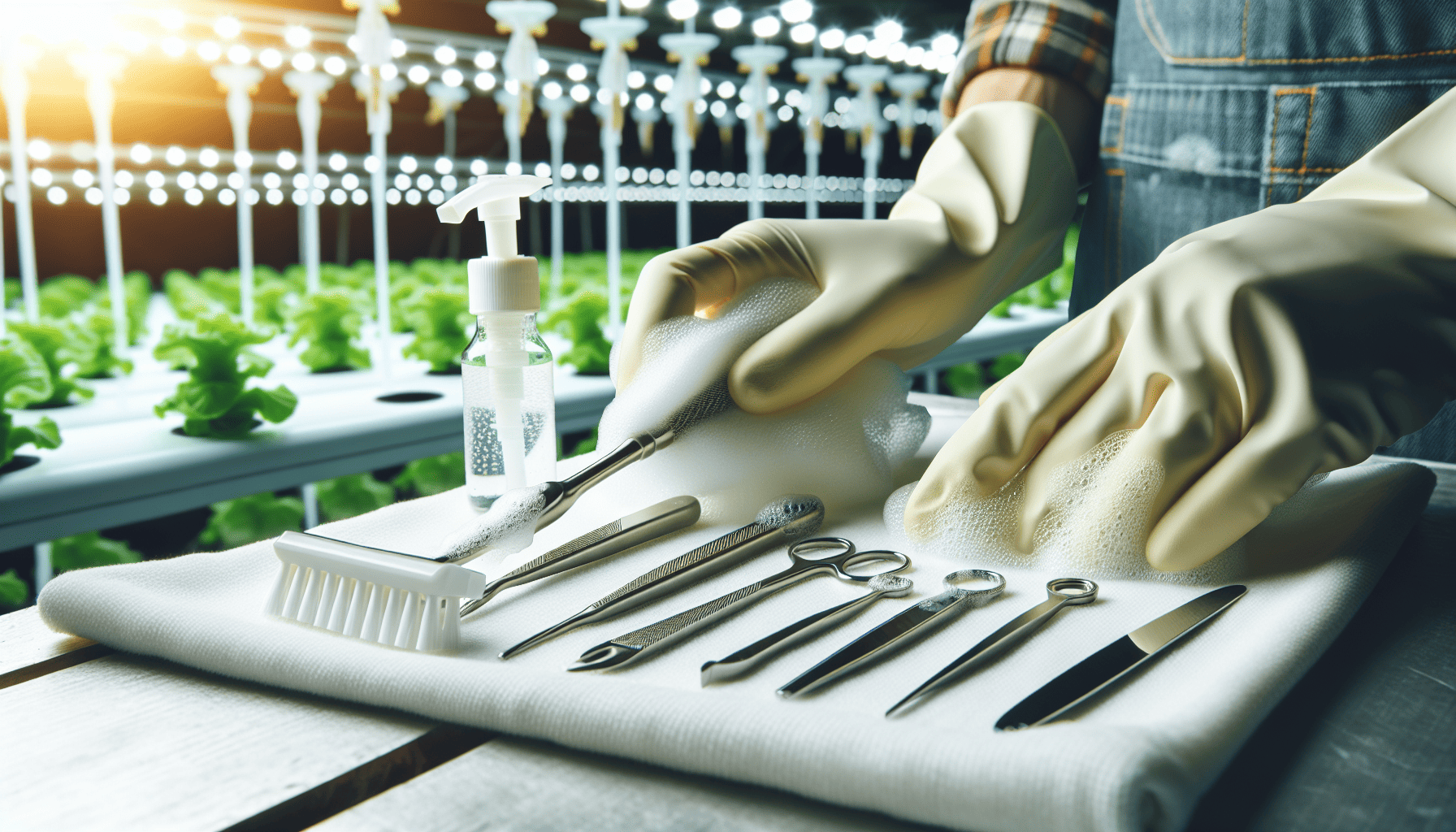
Understanding the importance of maintaining a hydroponic system, let’s now focus on critical tasks for keeping it in peak condition. The first step is to drain and remove all water from the reservoir, recommended weekly to keep cleanliness preserved.
Regular sterilization is also crucial for maintenance. This can be achieved through chemical washes or heat treatments using specific cleaning agents, especially when dealing with organic materials. Monitoring pH and EC levels regularly will ensure an optimal environment for plant growth.
Lastly, after each growing cycle, it is important to thoroughly clean your hydroponic system by performing a comprehensive cleansing process that includes scrubbing every aspect of the system.
Monitoring pH and EC Levels
An essential aspect of a healthy hydroponic system is maintaining balanced pH and EC levels. Regular monitoring of these levels guarantees that your plants have the optimal supply of nutrients they need for growth. While the recommended pH and EC levels may vary depending on plant type, it is crucial to check them daily to ensure a thriving system.
To keep ideal pH and EC levels, certain tools such as pH test kits, meters for both parameters (pH & TDS), among others, are necessary. To adjust the acidity or alkalinity in the system’s solution, you can add acid/base solutions accordingly.
Moreover. Altering nutrient concentration by adding clean water will decrease it while incorporating supplements increases its value.
Cleaning Reservoirs and Filters
The cleanliness of the reservoir and filters is crucial for maintaining a healthy hydroponic system. By regularly removing debris and contaminants, you can ensure that your plants receive a clean nutrient solution.
Sterilizing the hydroponic reservoir with hydrogen peroxide or bleach is recommended to eliminate harmful microbes before each cycle of nutrient solution. It’s also important to clean the basin using water and hydrogen peroxide on a scrubber or sponge. This regular cleaning routine will keep your entire system in optimal condition, promoting an abundant and thriving garden.
Sterilizing Equipment and Tools
In order to prevent the spread of diseases and pests in your hydroponic system, it is crucial to sterilize not only reservoirs and filters, but also all equipment and tools used. This will help ensure a healthy environment for plant growth by eliminating potential risks.
One effective method of sterilizing hydroponic equipment is through immersion in a solution containing bleach or hydrogen peroxide. Regularly disinfecting these items eliminates harmful microbes, making them safe for use again. The recommended concentration for using hydrogen peroxide as a sanitizing agent on hydroponic systems is 3 milliliters per gallon of water.
Tips for Efficient Hydroponic Maintenance

Having addressed the fundamentals of hydroponic maintenance, we proceed to some tips for enhancing the efficiency of your maintenance routine. These tips include establishing a maintenance schedule, using appropriate cleaning agents, and keeping a maintenance log.
Creating a maintenance schedule is key to fostering plant health and securing satisfactory yields. Employing appropriate cleaning agents like hydrogen peroxide or vinegar is vital for comprehensive cleaning without damaging plants or equipment.
Finally, keeping a maintenance log is crucial for systematically documenting all tasks and preemptively spotting potential issues, thus guaranteeing efficient maintenance and problem prevention in hydroponic systems.
Establish a Maintenance Schedule
A well-maintained hydroponic system is essential for promoting the growth of healthy plants and achieving a satisfactory yield. To ensure optimal condition, it is important to establish a regular maintenance schedule in hydroponics. This includes tasks such as daily inspections, checking plumbing components, monitoring nutrient and pH levels, sterilizing equipment regularly, and addressing any pests or diseases.
To these routine tasks, conducting thorough cleaning every 2-6 weeks (depending on the size) and replenishing the nutrient solution every 1-2 weeks are recommended. The frequency may vary based on factors like plant type,growth stage,and environmental conditions, but smaller systems require more frequent changes than larger ones.This will help keep your hydroponic system functioning properly.
By following a consistent maintenance schedule for your hydroponic system, you can rest assured that it remains in good health, making sure you achieve maximum productivity from your plants.These measures, taken together with proper cleaning practices, would also prevent issues caused by harmful substances,fungi,bacteria,insects.With this approach, the best results should always be achievable regardless of circumstances.You’re advised not neglecting inspections.
Use Appropriate Cleaning Agents
The proper use of cleaning agents is essential for maintaining your hydroponic system. When choosing the right one, like food grade hydrogen peroxide or vinegar, it ensures a thorough clean without causing harm to plants or equipment.
Food grade hydrogen peroxide offers various benefits such as eliminating buildup and bacteria, preventing infestations, adding oxygen to water and promoting healthier root systems that aid in increased nutrient absorption.
Alternatively, vinegar works effectively by removing calcium deposits and algae build up over time while also getting rid of accumulated residue from the system.
Keep a Maintenance Log
Recording maintenance tasks and regularly checking the hydroponic system is important in keeping track of its performance and detecting potential problems. A log specifically created for tracking hydroponic maintenance serves as a documented guide or checklist to monitor all upkeep activities.
The recommended frequency for updating this log, which should cover daily or periodic inspections, depends on factors like water changes and size of the setup. The focus should be on essential plant needs such as light, water supply, nutrient levels, temperature regulation and any specific requirements unique to different types of plants grown using this system.
Troubleshooting Common Hydroponic Issues
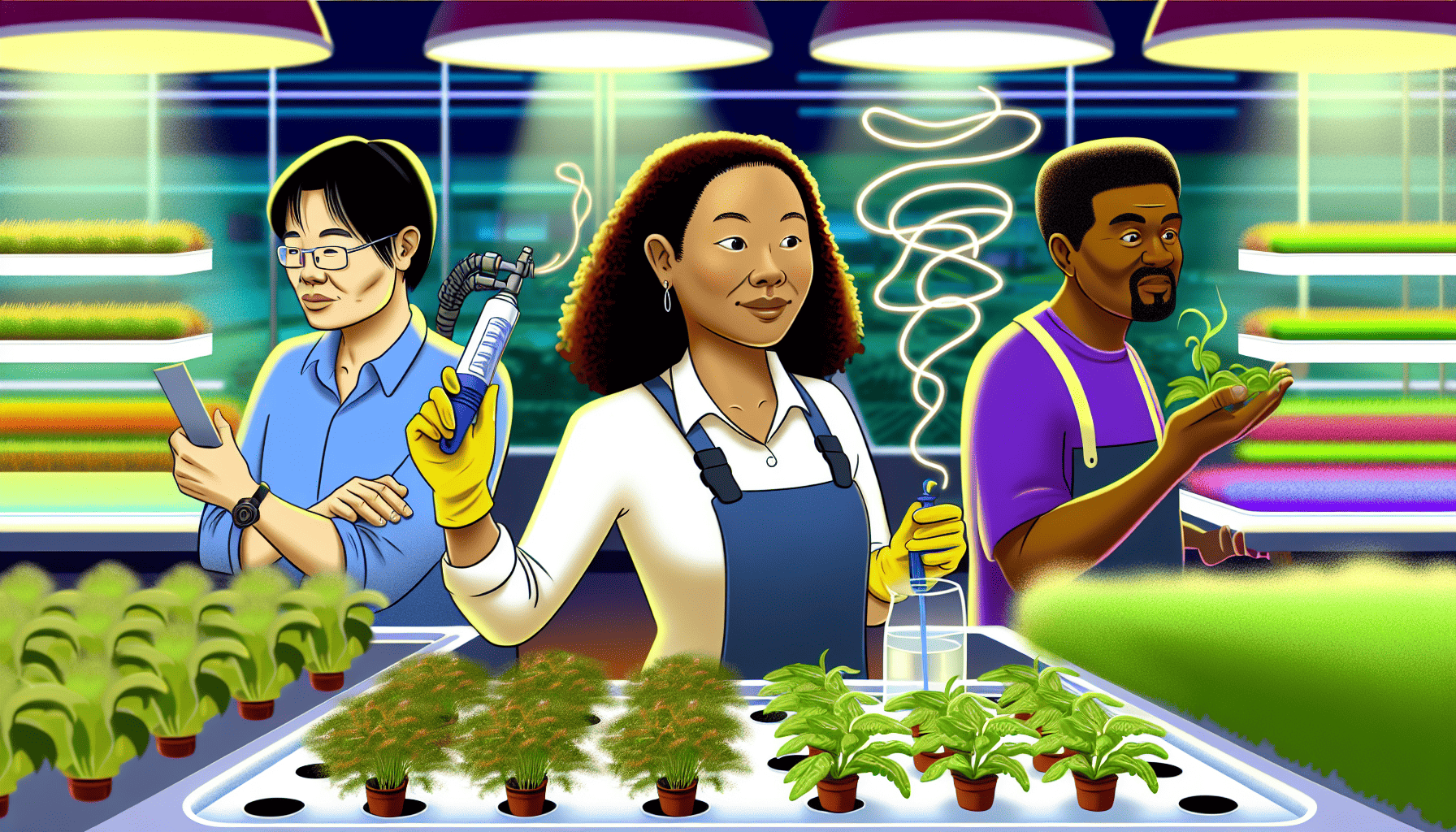
Even with careful maintenance, problems may still arise in your hydroponic system. These can include nutrient imbalances, algae growth, and issues with pests and disease control. It is important to understand the causes of these problems and how to address them effectively.
To keep your hydroponic system running smoothly, it is crucial to be able troubleshoot common issues that may occur. This includes understanding what factors contribute to these problems as well as knowing practical solutions for resolving them. In the following sections, we will delve into each issue individually and provide useful tips for troubleshooting within a hydroponic system.
Nutrient Imbalances
Balancing nutrients in hydroponic systems can be a significant obstacle. Contributing factors to nutrient imbalances may include high pH levels in the media or water, uneven distribution of nutrients, changes in temperature and precipitation caused by varying pH levels, as well as buildup of salt within the system.
To address these challenges with nutrient imbalances, it is important to adjust the solution’s acidity using substances like phosphoric acid or other products designed for decreasing pH levels. To increase alkalinity level potassium hydroxide or related solutions are recommended.These measures should also incorporate adding appropriate amounts of essential elements into nutrient solutions on a regular basis to ensure optimum plant health.
It is advised that medium-sized systems have their entire supply changed every two weeks while smaller ones may require more frequent refills.
Algae Growth
The growth of algae is a common problem in hydroponic systems, often caused by clogged pipes which can lead to overflow or pump blockage. This not only affects the visual appeal and functionality of the system, but also impacts plant health due to nutrient depletion and oxygen deprivation.
One major factor that contributes to algae proliferation in these systems is exposure to light. The more light there is, the faster algae colonies will grow. To prevent this, controlling shading and maintaining optimal temperature levels are effective methods.
There are several ways to effectively combat algae growth in hydroponic systems such as using opaque materials for water coverage, adding hydrogen peroxide into the water, regularly cleaning and sanitizing all parts of the system with dish soap solution included tank replacement on a regular basis.
Pest and Disease Control
Pests and diseases can be a major concern in hydroponic gardens. To prevent them, it is recommended to maintain sterility by using clean equipment and plants, regularly sanitizing the system, removing infected plants promptly, and keeping a close eye on potential issues.
To ensure optimal health of your hydroponic garden:
Consistently change water
Adhere to proper hygiene practices
Regularly monitor for early detection and prevention of pests or diseases
Utilize natural control methods such as beneficial insects or organic pesticides
These maintenance techniques are crucial for maintaining stability in a healthy hydroponic system.
Choosing the Right Hydroponic System for Easy Maintenance
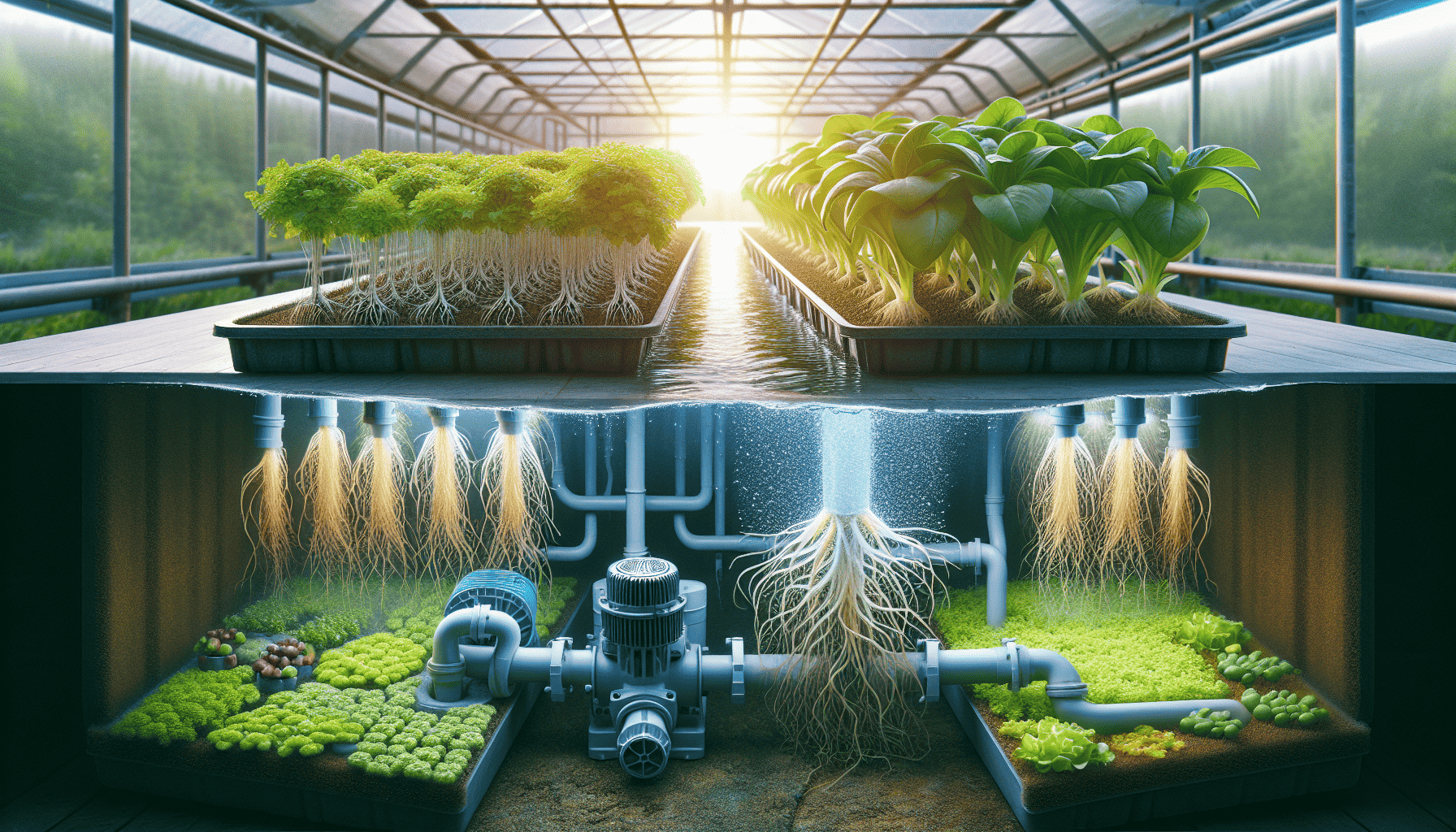
Choosing the right hydroponic system can make maintaining your plants much easier. Hydroponic systems fall into two main categories: passive and active. Each type has its own benefits and maintenance requirements.
Passive systems, such as wick or raft setups, require less upkeep but may have limitations on plant variety and growth potential. Active systems like nutrient film technique or aeroponics typically require more maintenance but offer greater control over growing conditions and potential for higher yields.
In the following sections, we will explore these types of hydroponic systems in Detail to understand their distinct features and necessary upkeep tasks they require.
Passive Systems
Passive hydroponic systems rely on gravity or capillary action to circulate the nutrient solution. While these systems typically require minimal maintenance, it is important to conduct daily checks and ensure that all plumbing components, including pumps, are functioning correctly.
There are limitations to passive hydroponic systems. They may not be suitable for tall plants or those with deep tap root systems. Only specific plant species can thrive in these types of setups over extended periods of time due to their reliance on a constant supply of nutrients from the solution used in the system.
Active Systems
In contrast, active hydroponic systems involve the use of pumps to circulate and distribute the nutrient solution. This allows for precise control over important factors such as nutrient content, pH levels, and overall growing conditions in order to consistently provide plants with optimal resources.
Compared to passive systems, active hydroponic setups require more frequent maintenance tasks. It is essential that a daily check is performed on plumbing structures, pumps, growth channels, and other necessary components in order to ensure a well-functioning system. Additionally,rinsing thoroughly and periodically flushing reservoirs are crucial steps in maintaining cleanliness and efficiency within the system.
Summary
Proper maintenance of a hydroponic system may seem daunting, but it is essential for optimal functioning. Regular tasks such as checking pH and EC levels, cleaning equipment and reservoirs, and sterilizing filters are crucial to keep the system in good shape. It’s also helpful to establish a schedule for maintenance, use appropriate cleaning agents, and keep track of all your activities in a log.
By consistently maintaining your hydroponic setup and proactively solving any issues that arise, you’re setting yourself up for success with an abundant garden yield. Remember that well-maintained systems lead to thriving gardens – so here’s wishing you plenty of green thumbs as you tend to your flourishing hydroponic haven!
Frequently Asked Questions
Do hydroponics require maintenance?
Proper maintenance and attentive management of system components are crucial for hydroponic systems to avoid crop failure and maintain high water quality.
How do you maintain hydroponic water?
To ensure the well-being of hydroponic water, it is crucial to maintain a suitable temperature for the nutrient solution, routinely fill up the reservoir with fresh water and replace old solutions. It is also essential to provide adequate aeration, regularly clean out filters and conduct regular pH and EC tests. Maintaining proper functioning of equipment by conducting frequent checks is imperative.
How often do hydroponics need to be cleaned?
It is advised to perform routine cleaning of the hydroponic system, specifically the reservoir, every 7-14 days or whenever a change in nutrient formula occurs. It is recommended to rinse off the growing medium during each maintenance session. Consistent upkeep plays a vital role in promoting healthy plant growth within this type of farming setup.
What are the benefits of using hydrogen peroxide as a cleaning agent in hydroponic systems?
The utilization of hydrogen peroxide as a cleaning substance for hydroponic systems provides advantages including the removal of residue, bacteria, and prevention of infestations. It also introduces additional oxygen into the water, which eliminates harmful bacteria and promotes healthier root systems to enhance nutrient absorption. This makes it an effective tool in maintaining clean and hygienic hydroponic environments.
What are some common pests and diseases that hydroponic systems often face?
Pests and diseases can be a common problem for hydroponic systems, including spider mites, aphids, whiteflies, thrips, and fungus gnats. To these pests,you may also need to watch out for root rot and powdery mildew in your system. It is crucial to regularly monitor your system and take prompt action if any issues arise in order maintain its health.

